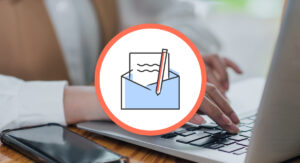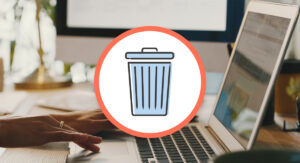Email List Management Best Practices
 A successful email marketing strategy depends on having a strong, clean list. Email list management encompasses a number of actions you’ll want to master in order to grow a loyal list of subscribers. From managing bounced emails to adding double opt-in signup forms and creating re-engagement campaigns, the goal is to grow your subscriber base with engaged opt-ins, turning browsers into shoppers and prospects into customers.
A successful email marketing strategy depends on having a strong, clean list. Email list management encompasses a number of actions you’ll want to master in order to grow a loyal list of subscribers. From managing bounced emails to adding double opt-in signup forms and creating re-engagement campaigns, the goal is to grow your subscriber base with engaged opt-ins, turning browsers into shoppers and prospects into customers.
Keeping your list engaged
Keeping your list engaged ensures your email campaigns earn the results you’re looking for. If no one opens your emails, then certainly no one’s reading them either. Plus, sending emails only to have them wind up in spam folders or go to nonexistent addresses will negatively impact your sender reputation as well as that of your IP, lowering your deliverability rate.The inevitably of churn
Email churn refers to the number of people who leave your list through unsubscribing, report you as spam, have undeliverable addresses (resulting in bounces), or don’t open your emails at all. Either they are not engaging with your emails, or they have disengaged from your brand altogether. While some churn seems inevitable, using email list hygiene best practices will help rejuvenate your list and slow the churn to a manageable rate.6 email list management best practices
Email list hygiene is a necessity for a successful email marketing campaign — especially to get the results you want. These six management techniques will help you keep your list up-to-date with engaged subscribers, increasing your ROI and meeting your KPIs.1. Warmly welcome new subscribers
Start engaging subscribers at their first contact with you, when their experience is fresh, and their excitement about your company is at an all-time high. Begin by sending an automated welcome email or series of emails triggered by their opt-in. The first welcome email should thank your subscriber for joining your list. Be sure to ask them to “allowlist” your email in their address book, so you can stay out of the spam folder. Take the opportunity to personalize this welcome series as much as possible, direct subscribers to your best content, and aim to make them feel welcome and invested in your brand. This welcome email also gives your the perfect opportunity to let your subscribers know how often you’ll be messaging them and with what content. So, be clear about how your subscribers can contact you, adjust their preferences, or unsubscribe.2. Listen to subscribers' messaging preferences
In their research of more than 2,000 consumers, closely reflecting U.S. demographics, MarketingSherpa reports that consumers most often cite receiving too many emails as their primary reason for unsubscribing to lists. By allowing subscribers to easily choose the frequency at which they receive your mail, you’ll take the guesswork out of segmenting, and keep subscribers engaged and happy to hear from you. Giving subscribers the option to unsubscribe from emails they don’t want, while staying connected to the content they do, is a great way to show your contacts how much you value your relationship with them.3. Practice good list hygiene
“List hygiene” has become a buzzword throughout email marketing circles. And with good reason — keeping your list clean is important to the success of your marketing efforts. Consider cleaning your list a few times a year, or when you notice a spike in bounce rates, whichever comes first. Here’s what you can do to keep your list fresh:- Remove duplicate addresses
- Remove addresses with typos
- Fix addresses with typos
- Update invalid addresses
- Remove invalid addresses
- Delete addresses that bounce
4. Re-engage or eliminate old contacts
An unengaged contact is a valid email address that is subscribed to your marketing but that doesn’t open or read your emails. Even if they haven’t actually clicked the unsubscribe button, they’re probably deleting your emails. You have two options: you can remove their address since they’re not helping your sender reputation or ROI, or you can try to re-engage them. Re-engagement campaigns are a fantastic way to re-ignite lagging subscribers’ interest in your product or service. Only send re-engagement emails to those list members who haven’t opened or clicked for 6 months to a year. Send them a targeted email, perhaps with the updated benefits of subscribing, and ask them to re-subscribe. If they don’t, you can feel good about removing them from your list, knowing you’ll ultimately see better results from more engaged subscribers.5. Make unsubscribing easy
If one of your contacts wants to unsubscribe, they’re going to — one way or another. If they can’t easily scan your email to see where to unsubscribe, they’ll mark you as spam instead. Having a prominent unsubscribe button keeps you on the right side of CAN-SPAM and keeps users happy, even if they aren’t a good fit for your campaigns. With unengaged users off the list, you can concentrate on delivering targeted, relevant content to the people who are excited to hear from you — and that’s what brings in an increased ROI.6. Do not buy email lists
Put simply: buying lists is illegal. You could face legal backlash from violating CAN-SPAM and end up paying $16,000 in fines for each email sent improperly. Most purchased or rented email lists are poor quality; the addresses aren’t targeted for your brand, niche, or industry, and you’re unlikely to get value from interacting with them. These lists also consist of spam traps — once-valid email addresses that will automatically get your IP blocklisted for sending to them.Keep your list strong & healthy
A strong email list can improve your deliverability, increase your ROI, and position your business for digital success. But, no matter how much you want to have a huge list, remember quality is determined by results — not the number of addresses on your list. Grow your list of subscribers organically with permission-based tactics and manage it by conducting frequent, scheduled maintenance. Learn more optimizing your email experience with our guide on Email Subject Line Tips and Best Practices for 2023. Get the guide here!
MOST RECENT ARTICLES
Want to engage your audience and grow your brand? Try Emma's robust easy-to-use product today.











